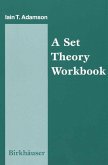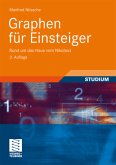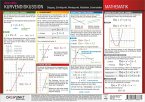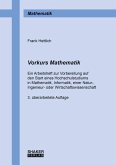"All through both volumes [Functions & Graphs and The Methods of Coordinates] , one finds a careful description of the step-by-step thinking process that leads up to the correct definition of a concept or to an argument that clinches in the proof of a theorem. We are ... very fortunate that an account of this caliber has finally made it to printed pages... Anyone who has taken this guided tour will never be intimidated by n ever again... High school students (or teachers) reading through these two books would learn an enormous amount of good mathematics. More importantly, they would also get a glimpse of how mathematics is done." -- H. Wu, The Mathematical Intelligencer
The need for improved mathematics education at the high school and college levels has never been more apparent than in the 1990's. As early as the 1960's, I.M. Gelfand and his colleagues in the USSR thought hard about this same question and developed a style for presenting basic mathematics in a clear and simple form that engaged the curiosity and intellectual interest of thousands of high school and college students. These same ideas, this development, are available in the following books to any student who is willing to read, to be stimulated, and to learn.
Functions and Graphs provides instruction in transferring formulas and data into geometrical form. Thus, drawing graphs is shown to be one way to "see" formulas and functions and to observe the ways in which they change. This skill is fundamental to the study of calculus and other mathematical topics. Teachers of mathematics will find here a fresh understanding of the subject and a valuable path to the training of students in mathematical concepts and skills.
Hinweis: Dieser Artikel kann nur an eine deutsche Lieferadresse ausgeliefert werden.
The need for improved mathematics education at the high school and college levels has never been more apparent than in the 1990's. As early as the 1960's, I.M. Gelfand and his colleagues in the USSR thought hard about this same question and developed a style for presenting basic mathematics in a clear and simple form that engaged the curiosity and intellectual interest of thousands of high school and college students. These same ideas, this development, are available in the following books to any student who is willing to read, to be stimulated, and to learn.
Functions and Graphs provides instruction in transferring formulas and data into geometrical form. Thus, drawing graphs is shown to be one way to "see" formulas and functions and to observe the ways in which they change. This skill is fundamental to the study of calculus and other mathematical topics. Teachers of mathematics will find here a fresh understanding of the subject and a valuable path to the training of students in mathematical concepts and skills.
Hinweis: Dieser Artikel kann nur an eine deutsche Lieferadresse ausgeliefert werden.
"All through both volumes [Functions & Graphs and The Methods of Coordinates], one finds a careful description of the step-by-step thinking process that leads up to the correct definition of a concept or to an argument that clinches in the proof of a theorem. We are ... very fortunate that an account of this caliber has finally made it to printed pages... Anyone who has taken this guided tour will never be intimidated by n ever again... High school students (or teachers) reading through these two books would learn an enormous amount of good mathematics. More importantly, they would also get a glimpse of how mathematics is done."
-- H. Wu, The Mathematical Intelligencer
-- H. Wu, The Mathematical Intelligencer









